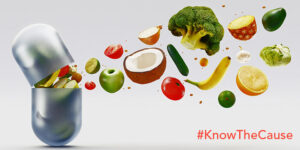

| Mold (fungi) frequently grow on foodstuffs and produce a wide variety of toxins called mycotoxins. Grains and peanuts are especially susceptible to mycotoxin contamination- especially if they have been stored under wet conditions and/or for long periods. Many types of molds can contaminate grains and other foodstuffs including Fusarium, Aspergillus, Penicillium and Alternaria. A common mycotoxin found in contaminated grain is Zeralenone (ZEN) which is produced by Fusarium. |
|
Zearalenone mimics estrogen in humans and dietary consumption of zeralenone has been linked to early puberty and endometrial cancers. Other common mycotoxins produced by Fusarium and other molds and found on grains includethe trichothecene mycotoxins. Common trichothecene mycotoxins include the T-2 and H- {flike} |
Doug Kaufmann has written many books that cover a full range or health issues. Find out which of his books best suits you by clicking the button below.
Doug Kaufmann developed his diet after years studying the clinical effects of pathogenic fungi on the body. Fungi and yeasts can become parasitic organisms on and inside our body, causing health problems that can be difficult to diagnose. Learn more about the Kaufmann Diet, change your life and know the cause.
We encourage all visitors to this site to take some time and study these technical articles prior to initiating lifestyle changes, including dietary changes and to do so with their physician’s awareness and approval. The articles posted in this link are scientific and with few exceptions are taken from medical journals familiar to healthcare workers.
Looking for help assembling antifungal Kaufmann Diet approved recipes for breakfast, lunch or dinner? We have several videos, books and recipe write ups here on Know the Cause that will help your health journey. The recipes in this section are so good, you’ll feel like you’re indulging. No sacrifice needed! Enjoy.
© 2024 Mediatriton Inc. All Rights Reserved • Website by Skynet Solutions